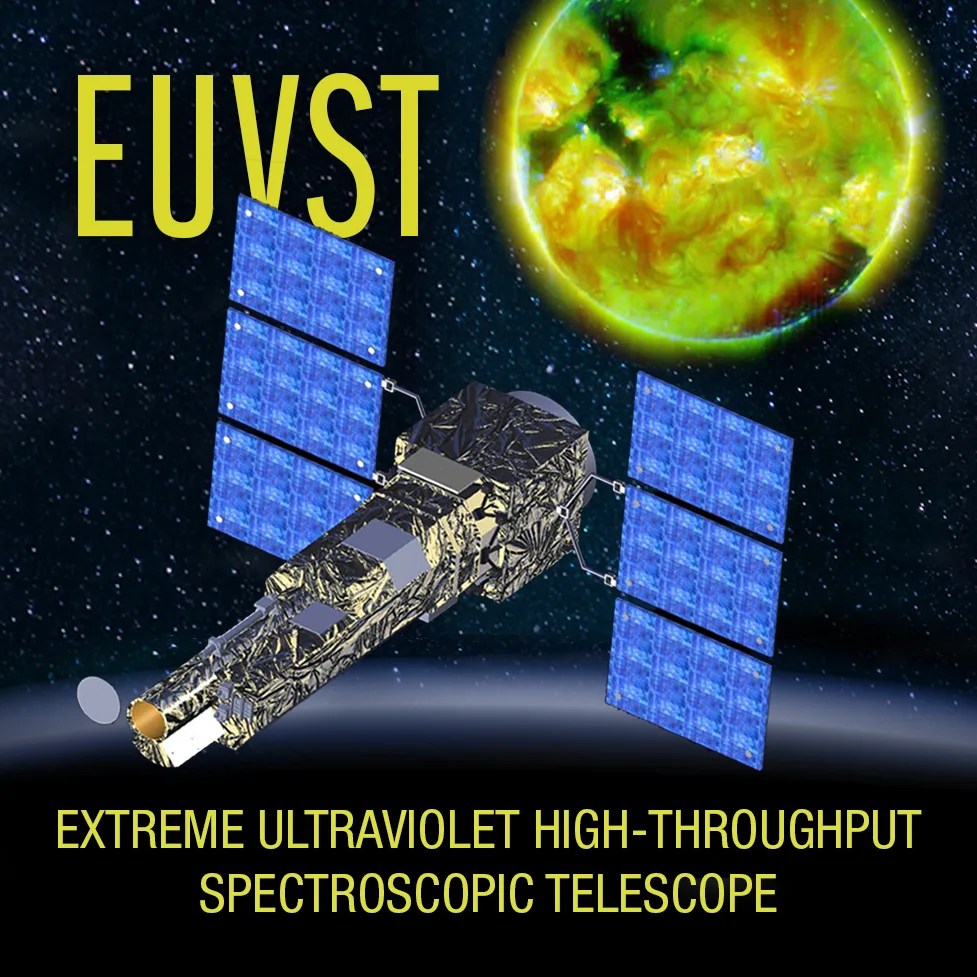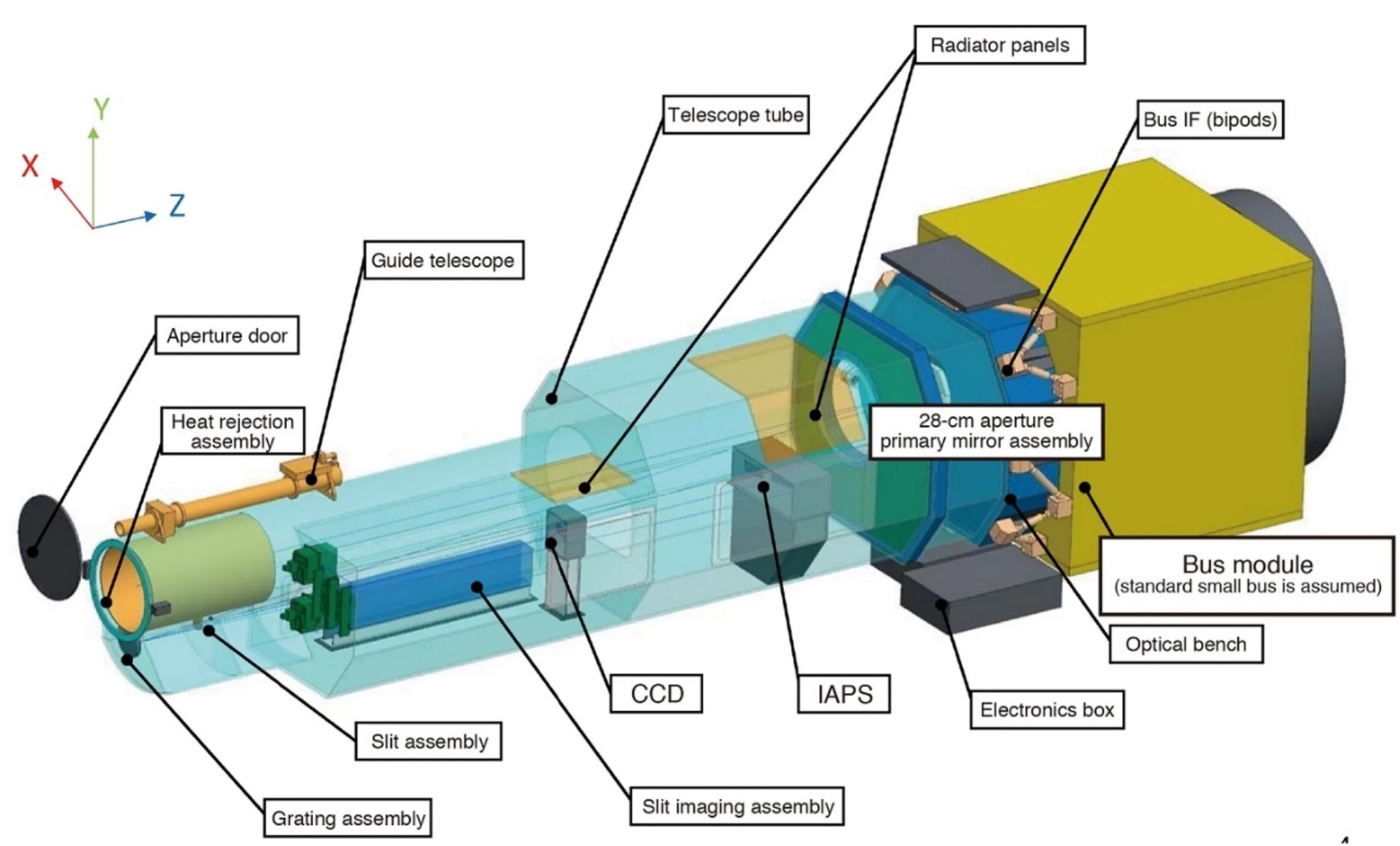EUVST
Extreme Ultraviolet High-Throughput Spectroscopic Telescope

Extreme Ultraviolet High-Throughput Spectroscopic Telescope (EUVST) mission will expand how NASA studies the Sun, space, and Earth as an interconnected system and address the recommendations of a July 2017 final report delivered by the multi-agency Next Generation Solar Physics Mission Science Objectives Team. It will observe the Sun's different temperatures, simultaneously, seamlessly, with high temporal and spatial resolution and take comprehensive UV spectroscopy measurements of the solar atmosphere at the highest level of detail to date. This will allow scientists to tease out how different magnetic and plasma processes drive coronal heating and energy release.
An international cooperation led by the Japan Aerospace Exploration Agency, JAXA, EUVST is a solar telescope that will study how the solar atmosphere releases solar wind and drives eruptions of solar material. These phenomena propagate out from the Sun and influence the space radiation environment throughout the solar system. NASA’s hardware contributions to the mission include an intensified UV detector and support electronics, spectrograph components, a guide telescope, software, and a slit-jaw imaging system to provide context for the spectrographic measurement.
The largest feature of EUVST is that it has the minimum optical elements, i.e. the primary mirror and the diffraction grating, and does not require filters, so that it can collect as much solar UV radiation as possible. These efforts will realize effective areas of 10-30 times larger than previous instruments and achieve the spectroscopy with high spatial (0.4 arcsec at maximum) and temporal (less than 1 sec) resolution. In addition, by detecting a variety of emission lines in the EUV range, EUVST will seamlessly observe the wide temperature range from the chromosphere (about 10,000 Kelvin), the corona (about 1 million Kelvin), and even the flare plasmas (about 10 million Kelvin). In fact, the simultaneous spectroscopy from the solar chromosphere to the corona and the flares at the 0.4'' resolution is the first attempt in the world. Moreover, the slit-jaw imager will return images of the photosphere and chromosphere, which will facilitate detailed coordinated observations with other solar satellites and ground-based telescopes. Through the three-axis attitude control of the spacecraft and the tip-tilt control of the primary mirror, the telescope is always targeted to the Sun with high accuracy.
Targeted for launch in 2026, the budget for NASA contributions to EUVST is $55 million. The principal investigator for the NASA contribution to EUVST is Harry Warren at the U.S. Naval Research Laboratory in Washington.





























